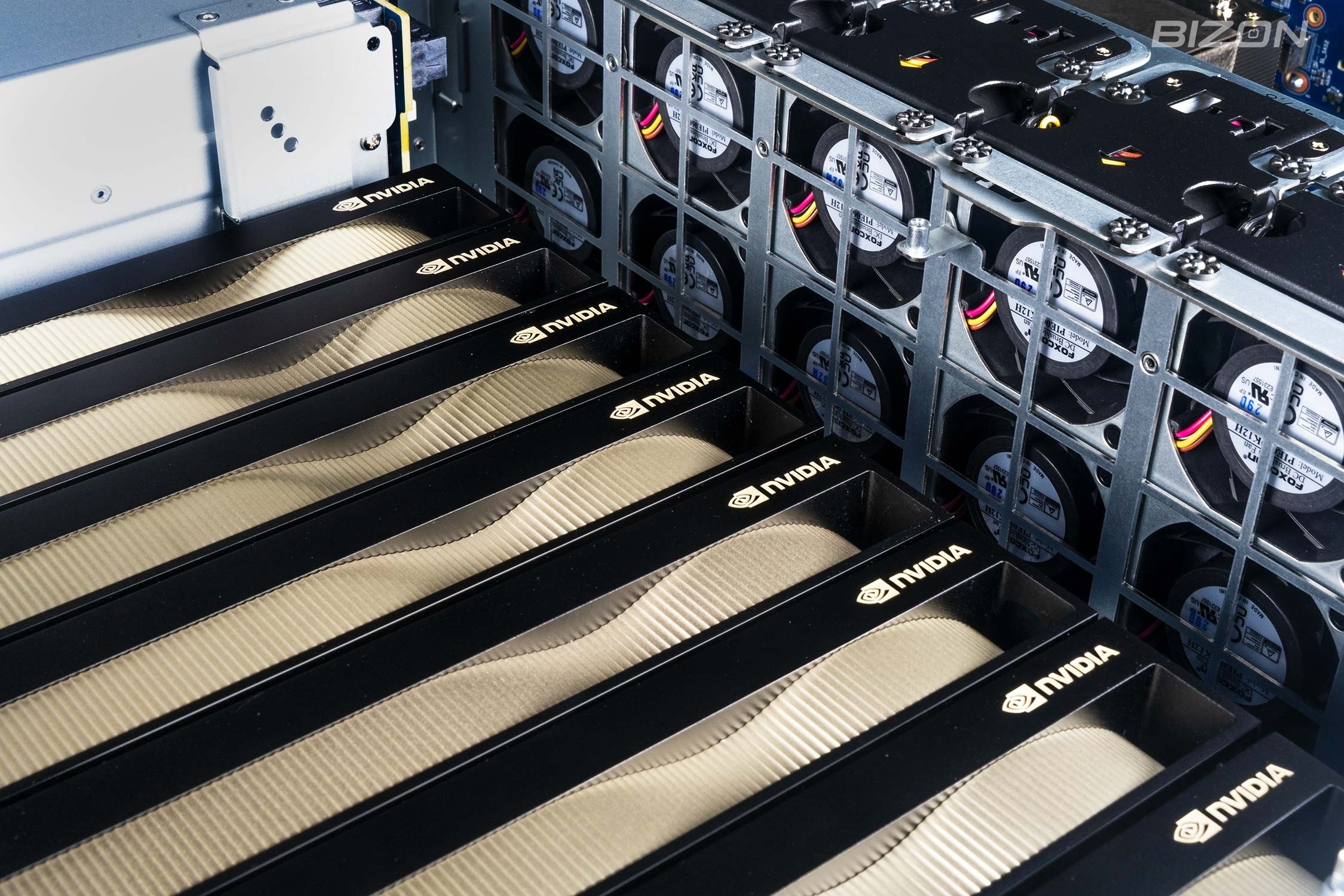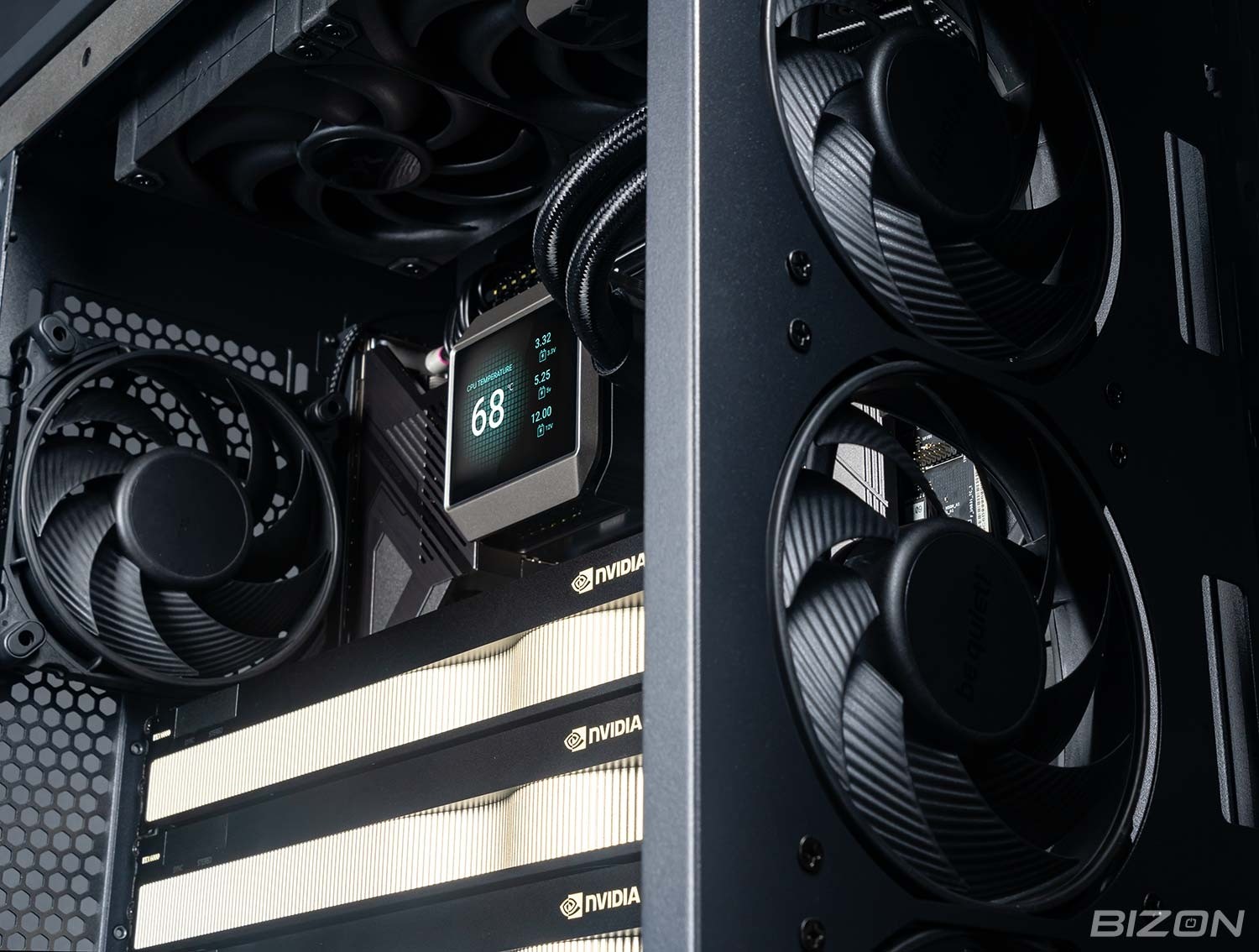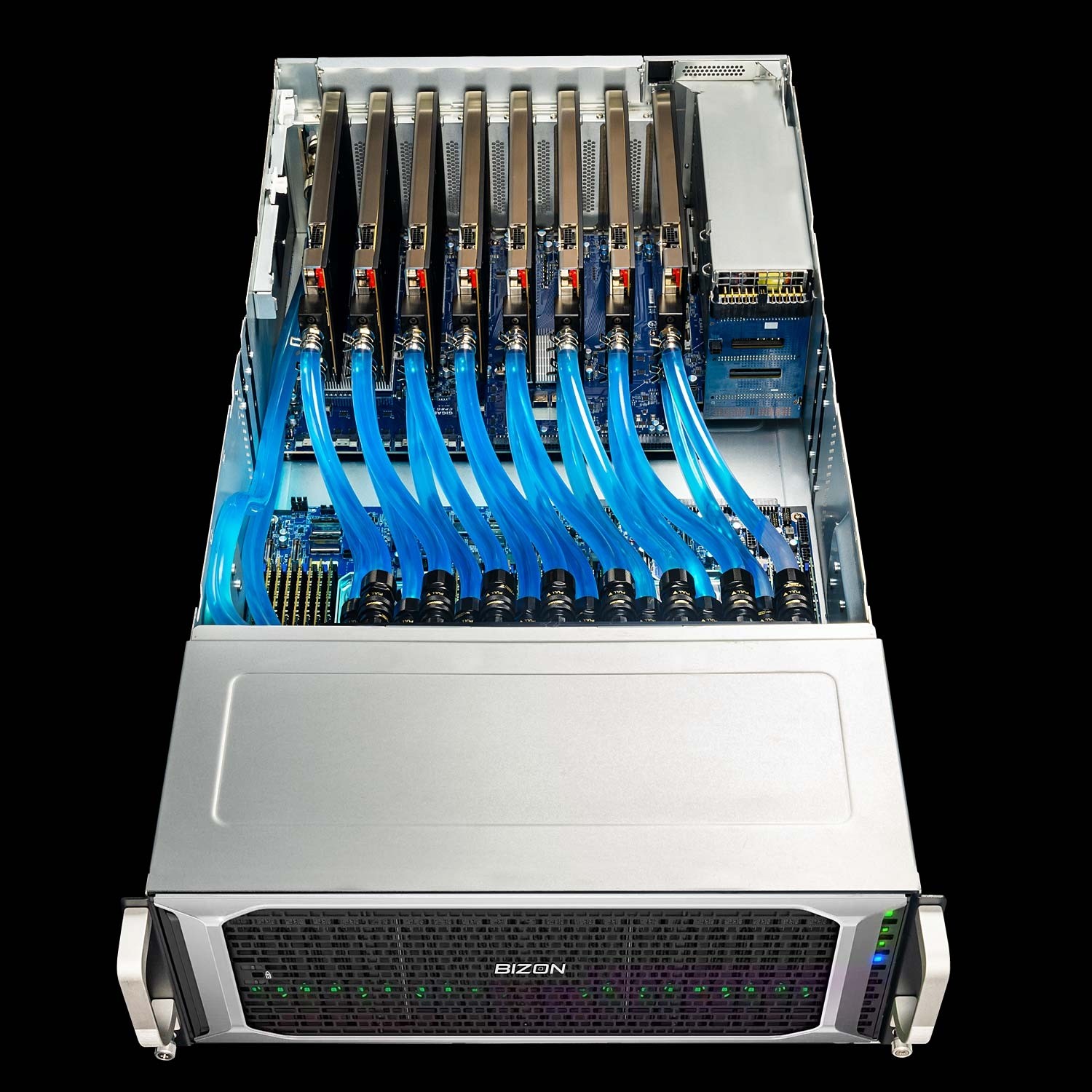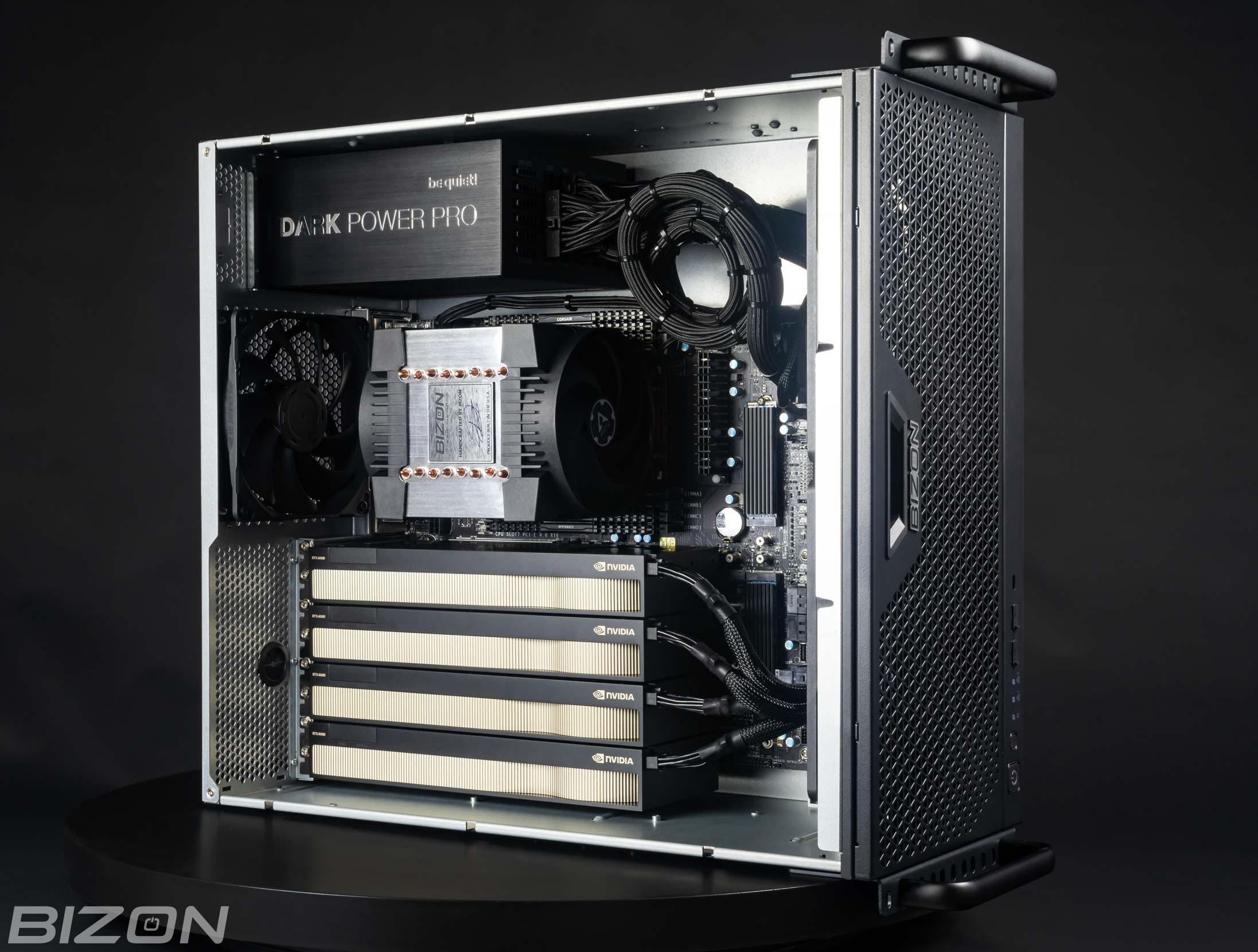Table of Contents
SLURM: An HPC Workload Manager for AI/ML workloads – Features, differences, SLURM vs. Kubernetes
Introduction
In the realm of high-performance computing (HPC), efficiently managing resources and workloads is crucial for optimizing performance and productivity. SLURM (Simple Linux Utility for Resource Management) is a leading open-source job scheduler designed to handle the most demanding computational tasks. For users who require robust and scalable solutions, leveraging SLURM on powerful workstations, such as those offered by Bizon, can provide significant advantages.

This article delves into the functionalities and benefits of SLURM, explains why high-performance workstations are vital for its effective use, and showcases how Bizon Workstations like the G9000, ZX9000 x5500, and R5500 can support and enhance SLURM operations.
What is SLURM?
SLURM, or Simple Linux Utility for Resource Management, is an open-source workload manager initially developed by Lawrence Livermore National Laboratory. It is designed to manage and allocate computational resources in large-scale computing environments, ranging from small clusters to some of the world's largest supercomputers.
Core Functionalities
- Job Queuing and Scheduling: SLURM allows users to submit jobs to a queue, where they are scheduled based on priority, resource availability, and user-defined policies.
- Resource Allocation: It dynamically allocates resources such as CPUs, GPUs, and memory to jobs, ensuring efficient use of hardware.
- Node Management: SLURM manages compute nodes, monitoring their status, health, and availability to maintain optimal performance.
- Scalability: It can scale from a single workstation to thousands of nodes, making it adaptable to various computing environments.
Benefits of Using SLURM
- Efficiency: By streamlining resource management and job scheduling, SLURM maximizes resource utilization and minimizes idle time.
- Flexibility: SLURM is highly customizable, allowing users to tailor it to their specific computational needs and workflows.
- Community Support: As an open-source tool, SLURM benefits from a large and active user community, providing extensive support and continuous development.

SLURM vs. Kubernetes
While both SLURM and Kubernetes are popular tools for managing workloads, they serve different purposes and are optimized for different types of tasks.
- SLURM
- Designed for HPC: SLURM is specifically designed for high-performance computing environments and is optimized for managing large-scale computational tasks.
- Job Scheduling: SLURM excels in job scheduling and resource allocation for scientific computing, AI, and ML workloads.
- Resource Management: Provides fine-grained control over computational resources, making it ideal for environments where resource allocation needs to be precise and efficient.
- Kubernetes
- Container Orchestration: Kubernetes is primarily designed for orchestrating containerized applications. It manages the deployment, scaling, and operation of applications using containers.
- Microservices Architecture: Best suited for applications following a microservices architecture, where different services are containerized and need to communicate with each other.
- Scalability and Flexibility: Kubernetes offers excellent scalability and flexibility for deploying cloud-native applications, but it may not provide the same level of resource management precision as SLURM for HPC tasks.
- Key Differences
- Use Case: SLURM is optimized for HPC and computational workloads, while Kubernetes is designed for managing containerized applications.
- Resource Management: SLURM offers detailed resource management and scheduling capabilities, essential for HPC environments. Kubernetes focuses on scaling and managing containerized applications.
- Complexity: SLURM configurations are tailored for scientific and computational tasks, whereas Kubernetes configurations cater to microservices and cloud-native applications.
RELION for Cryo-EM Using SLURM
- RELION Overview: RELION (REgularized LIkelihood OptimizatioN) is a software package used for the processing of Cryo-EM (cryo-electron microscopy) data. It is widely used in structural biology to determine high-resolution structures of macromolecules.
- SLURM Integration: SLURM is often used to manage the computational workload required by RELION. The high computational demands of Cryo-EM data processing make SLURM an ideal tool for distributing and managing these tasks across a high-performance computing cluster.
- Efficient Resource Utilization: Using SLURM with RELION allows researchers to optimize the allocation of CPU and GPU resources, ensuring efficient and timely processing of large datasets.
- Job Scheduling and Automation: SLURM's job scheduling capabilities enable the automation of complex workflows in RELION, reducing the need for manual intervention and allowing for the continuous processing of data.
Why Use SLURM with High-Performance Workstations?
High-performance workstations are essential for leveraging the full capabilities of SLURM. These workstations provide the necessary computational power and reliability to handle intensive workloads efficiently. Here are key reasons why powerful hardware is crucial:
- Enhanced Performance: Advanced CPUs and GPUs reduce the time required for complex computations, enabling faster job completion.
- Improved Reliability: High-quality hardware ensures stable and consistent performance, minimizing the risk of system failures.
- Scalability: Powerful workstations can handle growing computational demands, allowing for seamless scaling of operations.
Bizon Workstations Overview
Bizon Workstations are engineered to meet the demands of high-performance computing environments. With cutting-edge hardware components and a focus on reliability, these workstations are well-suited for running SLURM and managing intensive computational tasks.
Bizon G9000

The Bizon G9000 is a high-end workstation designed for extreme computational workloads.
Benefits:
- High Core Count: Supports extensive parallel processing, making it ideal for handling multiple simultaneous jobs. This ensures that SLURM can efficiently manage and distribute tasks across numerous cores, optimizing job completion times.
- Advanced GPU Capabilities: Accelerates computation-intensive tasks, such as machine learning and scientific simulations. SLURM can leverage the powerful GPUs in the G9000 to speed up job execution and improve overall system throughput.
- Large Memory Capacity: Ensures smooth operation of applications requiring large datasets. With SLURM, memory-intensive jobs can be allocated ample resources, preventing bottlenecks and enhancing performance.
Bizon ZX9000

The Bizon ZX9000 offers a balance of performance and efficiency, catering to diverse computational needs.
Benefits:
- Balanced Performance: Combines high CPU performance with powerful GPUs, ideal for varied workloads. SLURM can utilize the ZX9000 x5500’s balanced architecture to efficiently schedule and execute a wide range of jobs, from simple tasks to complex simulations.
- Octuple GPU Setup: Enhances parallel processing capabilities, suitable for machine learning and AI applications. SLURM can distribute GPU-intensive jobs across all GPUs, maximizing computational efficiency and reducing job processing times.
- Ample Memory: Supports extensive multitasking and large datasets. SLURM can manage and allocate memory resources effectively, ensuring that large-scale computations run smoothly without memory contention.
Bizon R5500

The Bizon R5500 provides a cost-effective solution without compromising performance in a small rackmount form factor.
Benefits:
- Cost-Effective Power: Offers high core count and powerful GPU performance at a lower cost. SLURM can efficiently allocate the R5500’s computational resources to maximize job throughput while minimizing costs.
- Versatile Performance: Suitable for a wide range of applications, from rendering to scientific computing. SLURM’s flexibility in resource management allows the R5500 to handle diverse workloads effectively, optimizing system utilization.
- Sufficient Memory and Storage: Ensures efficient handling of large tasks. SLURM can allocate the R5500’s memory and storage resources to large-scale jobs, preventing performance bottlenecks and enhancing overall efficiency.
Conclusion
SLURM is an indispensable tool for managing high-performance computing tasks, and pairing it with powerful workstations such as those offered by Bizon can significantly enhance your computational efficiency. Whether you are running complex simulations, rendering tasks, or intensive computational workloads, Bizon Workstations like the G9000, ZX9000 x5500, and R5500 provide the robust hardware necessary to maximize SLURM’s potential.
Moreover, Bizon offers the convenience of configuring and setting up SLURM on your workstation before delivery, ensuring a seamless and hassle-free experience. For more detailed information on how Bizon Workstations can support your SLURM setup and enhance your HPC capabilities, visit our website or contact our team for personalized recommendations.